Volume 30, Issue 3
Displaying 1-7 of 7 articles from this issue
- |<
- <
- 1
- >
- >|
Editorial
-
2010 Volume 30 Issue 3 Pages 158-159
Published: 2010
Released on J-STAGE: June 30, 2010
Download PDF (123K)
Review Article
-
2010 Volume 30 Issue 3 Pages 160-168
Published: 2010
Released on J-STAGE: June 30, 2010
Download PDF (460K) -
2010 Volume 30 Issue 3 Pages 169-175
Published: 2010
Released on J-STAGE: June 30, 2010
Download PDF (571K)
Mini Review
-
2010 Volume 30 Issue 3 Pages 176-180
Published: 2010
Released on J-STAGE: June 30, 2010
Download PDF (1081K) -
2010 Volume 30 Issue 3 Pages 181-185
Published: 2010
Released on J-STAGE: June 30, 2010
Download PDF (58K)
Original Article
-
2010 Volume 30 Issue 3 Pages 186-192
Published: 2010
Released on J-STAGE: June 30, 2010
Download PDF (433K) -
2010 Volume 30 Issue 3 Pages 193-205
Published: 2010
Released on J-STAGE: June 30, 2010
Download PDF (1538K)
- |<
- <
- 1
- >
- >|
